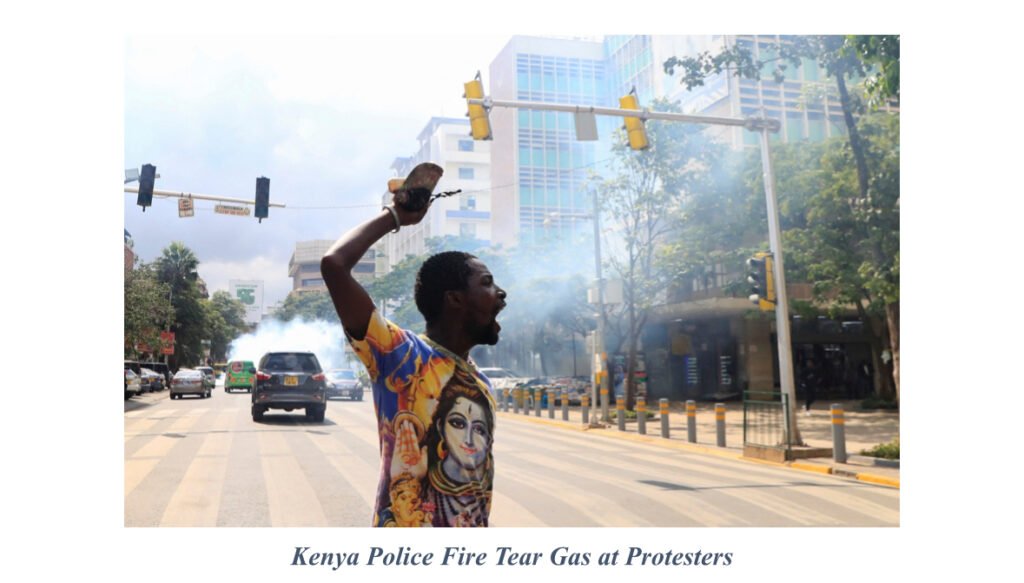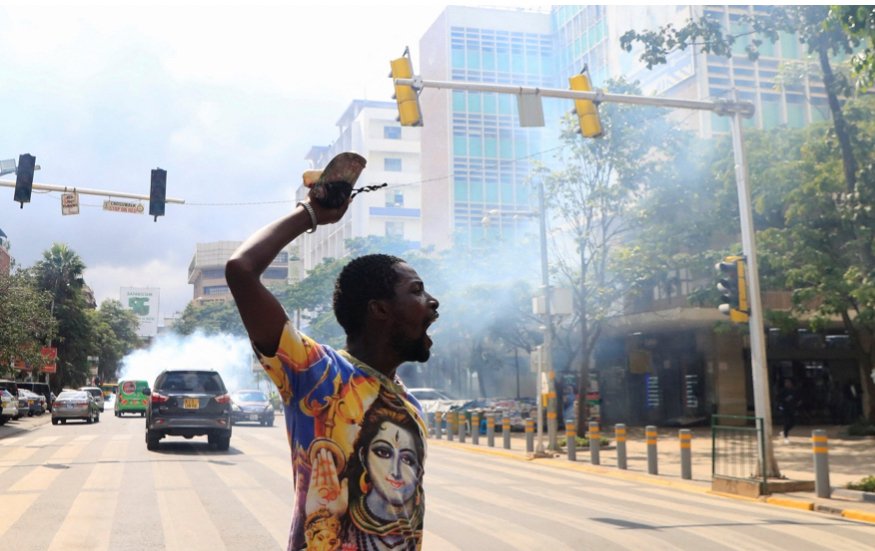By Horn Africa News Staff
Nairobi — A chilling directive from Kenya’s President William Ruto has sparked national and international alarm after he allegedly ordered police to shoot protesters in the legs. The command, reportedly issued last week, follows weeks of escalating demonstrations and a deadly police crackdown that has already left 31 dead, 107 injured, 532 arrested, and two missing, according to the Kenya National Commission on Human Rights.

The unrest reached a boiling point on Monday as tens of thousands took to the streets across the country, defying roadblocks and a heavy security presence. The day of protest coincided with Saba Saba Day — the anniversary of the pivotal 1990 movement that led to Kenya’s return to multiparty democracy — adding symbolic weight to demonstrators’ demands for justice, accountability, and reform.
The current protest movement began in June following the death of a teacher in police custody. The teacher had reportedly criticised a senior police official online, igniting widespread anger over police brutality and the suppression of dissent. His death, for many, became a final straw in a nation already strained by economic hardship and endemic corruption.
As the protests have grown in size and intensity, so too has the state’s response. Rights groups including Article 19 reported multiple violations against journalists and freedom of expression, with three reporters assaulted in recent days. The wave of repression has drawn comparisons to the darkest chapters of Kenya’s past.
“Every time we try to protest against these senseless and endless killings by the police, we are teargassed and some of us get arrested,” said Njoro, a young activist who first spoke to us in 2022 when Ruto had just taken office. “The voice of the youth is not being heard.”
That year, Ruto won the presidency in a low-turnout election marred by fraud allegations. Branding himself the “Hustler” and “Chicken Seller,” he claimed to be a leader of the people. But critics say his populist image has crumbled amid rising authoritarianism. Satirists, cartoonists, and online critics have faced intimidation, harassment, and disappearances. In December, famed political cartoonist Gideon Kibet — known as “Kibet Bull” — vanished for weeks after meeting with opposition figures. He reemerged in January, but the message was clear: dissent carries danger.
The Economist recently described Kenya as a country that “once set a fine example to the rest of Africa” but now “offers a how-to guide on smothering dissent.” Ruto’s reported directive to shoot protesters in the legs, while unconfirmed by the presidency, lends disturbing weight to that critique.
This is not the first time Kenya has been caught in a cycle of protest and repression — and tragically, it may not be the last. Each new wave of demonstrations is met with violence. Each death leaves deeper scars. And for many Kenyans, the dream of a truly democratic society seems further away than ever.





